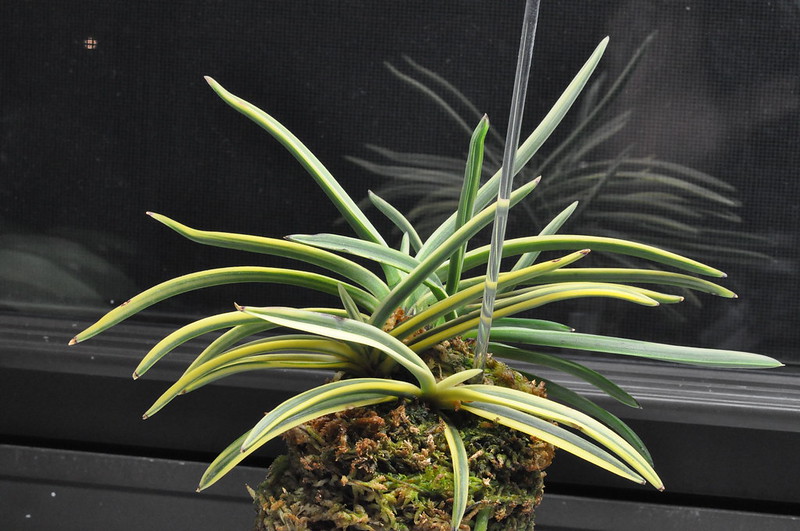Justin, both Nishidemiyako and Higashidemiyako were found from Kyoto region, and they are old varieties. "Nishi" is west, "Higashi" is east. "de" means exit, and "miyako" means the capital (it was Kyoto before Tokyo). There are lots of varieties derived from Nishidemiyako (and some from Higashidemiyako), but from what I gathered, Higashidemiyako (which was called Miyako-fukurin originally) is an independent origin as Matt said.
Nishidemiyako looks like white fukurin (i.e. the outside of the leaves is white and inside is green). But some people say that it is actually Sankou-nakafu (from outside to inside: green-white-green), with the outside green usually not visible (here is an illustration):
http://www.geocities.jp/neofine9/gei/sankou1.gif
So they say that this could be the reason why you occasionally see "nakasuke" (green outside, white inside) leaves coming out from Nishidemiyako. Basically the middle green of sankou-nakafu becomes invisible. One leaf of Marco's might be showing this. If this fixes, it becomes Manazuru, and it might goes to complete white -> death of the growth if separated. I think Tom was talking about this.
Well, this could be too much detail. I might sound like I know what I'm talking about, but I don't know much about Neo.

This is just what I found from web search in Japanese last year, so I don't know if it is true or not.
 nishidemiyako (西出都) 01 - 01.03.15 by Marco, on Flickr
nishidemiyako (西出都) 01 - 01.03.15 by Marco, on Flickr nishidemiyako (西出都) 01 - 01.05.15 by Marco, on Flickr
nishidemiyako (西出都) 01 - 01.05.15 by Marco, on Flickr nishidemiyako (西出都) 01 - 01.03.15 by Marco, on Flickr
nishidemiyako (西出都) 01 - 01.03.15 by Marco, on Flickr nishidemiyako (西出都) 01 - 01.05.15 by Marco, on Flickr
nishidemiyako (西出都) 01 - 01.05.15 by Marco, on Flickr



